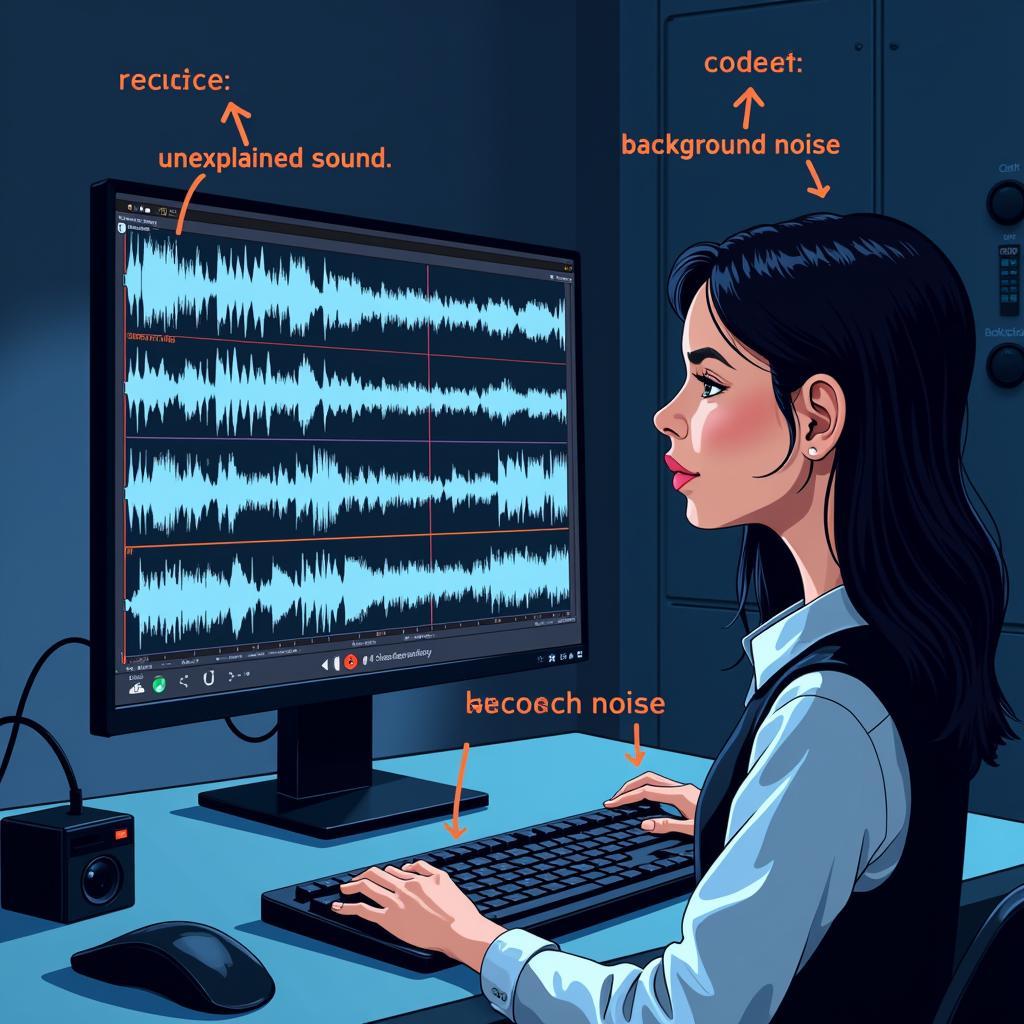Coding In Research is revolutionizing how we explore, analyze, and understand data. From qualitative studies in paranormal research to quantitative analysis in scientific fields, coding provides a structured and systematic approach to managing and interpreting information, ultimately leading to more robust and insightful findings. This powerful tool is no longer limited to computer scientists; it’s becoming an essential skill for researchers across disciplines.
What is Coding in Research?
Coding in research refers to the process of tagging segments of data with descriptive labels or “codes” to identify recurring themes, patterns, and relationships. This can involve text, audio, video, or images. Think of it as organizing a messy room – coding helps categorize and label everything, making it easier to find what you need and see the bigger picture. Applying coding techniques allows researchers to move beyond surface-level observations and delve into the nuances of their data. This process is particularly relevant in areas like badging at research, where complex data sets require careful analysis.
Qualitative Coding vs. Quantitative Coding
Qualitative coding is often used to analyze unstructured data, such as interview transcripts or open-ended survey responses. It involves identifying themes and concepts within the data and assigning codes to represent them. Quantitative coding, on the other hand, is typically used with structured data, such as survey data with predefined categories. This involves assigning numerical codes to represent different responses. Both approaches offer unique advantages for different types of research questions.
Why is Coding Important in Research?
Coding in research allows for a more systematic and rigorous analysis of data. It helps researchers identify patterns and trends that might otherwise be missed, enhancing the reliability and validity of research findings. By breaking down complex data into manageable chunks, coding enables deeper exploration and understanding of the information. Furthermore, coding facilitates the organization and retrieval of data, making it easier to revisit specific segments for further analysis and comparison. This structured approach is particularly helpful in fields like paranormal investigation, where evidence can be fragmented and difficult to interpret.
Coding in Paranormal Research
Within Paranormal Research, coding can help identify patterns in eyewitness accounts, environmental readings, and other forms of collected data. For instance, researchers can code recurring themes in reported experiences, such as feelings of dread, cold spots, or unexplained noises. This systematic approach can help uncover potential connections and commonalities between seemingly disparate events. This careful analysis can provide valuable insights and contribute to a more evidence-based understanding of paranormal phenomena.
 Coding in Paranormal Research – Analyzing EVP Recordings
Coding in Paranormal Research – Analyzing EVP Recordings
How to Code Data Effectively
Effective coding requires careful planning and execution. Begin by clearly defining your research questions and objectives. Next, familiarize yourself with your data. Then, develop a coding scheme, either deductively (based on pre-existing theories) or inductively (emerging from the data). Apply the coding scheme consistently throughout your data set. Finally, review and refine your codes as needed. Resources like Jon Peddie Research can offer valuable insights into data analysis methodologies.
Tools and Software for Coding
Various tools and software can assist with coding, ranging from simple spreadsheet programs to specialized qualitative data analysis software. These tools can help automate the coding process, manage large datasets, and visualize relationships within the data. Exploring these options can significantly streamline your research process.
“Coding allows us to dissect complex data and uncover hidden meanings,” explains Dr. Amelia Hayes, a leading researcher in paranormal studies. “It’s like peeling back the layers of an onion to reveal the core truths underneath.”
Benefits of Coding in Research
Coding in research offers numerous benefits, including improved data organization, increased transparency and rigor, and enhanced reliability of findings. It also facilitates data sharing and collaboration among researchers. By employing coding techniques, researchers can strengthen the validity of their conclusions and contribute to a more robust body of knowledge. For those interested in advertising research, understanding coding can be particularly beneficial, as seen in the Journal of Current Issues & Research in Advertising.
“In my research, coding has proven invaluable in identifying recurring patterns in paranormal phenomena,” shares Dr. Elias Thorne, a veteran paranormal investigator. “It helps bring order to chaos and allows for a more objective analysis of the evidence.”
Conclusion
Coding in research is a powerful tool for unlocking deeper insights from data. By systematically categorizing and analyzing information, researchers can uncover hidden patterns, strengthen their conclusions, and advance our understanding of the world around us, even in the realm of the paranormal. Embracing coding techniques will empower researchers to explore new dimensions of discovery and contribute to a more evidence-based future. Remember, effective research starts with organized data, and coding is the key. If you’re interested in cellular research, even a simple puzzle like the Cell Research Crossword can demonstrate the importance of structured information.
FAQ
- What are the different types of coding in research?
- How do I choose the right coding method for my research?
- What software is available for coding qualitative data?
- What are some common challenges in coding research data?
- How can I ensure the reliability and validity of my coding process?
- Where can I find more resources on learning coding for research?
- Are there any online courses or workshops available to learn coding for research?
For support, contact us at Phone: 0904826292, Email: research@gmail.com or visit us at No. 31, Alley 142/7, P. Phú Viên, Bồ Đề, Long Biên, Hà Nội, Việt Nam. We have a 24/7 customer support team. You might also find useful information about upcoming events at Forrester Research Events.